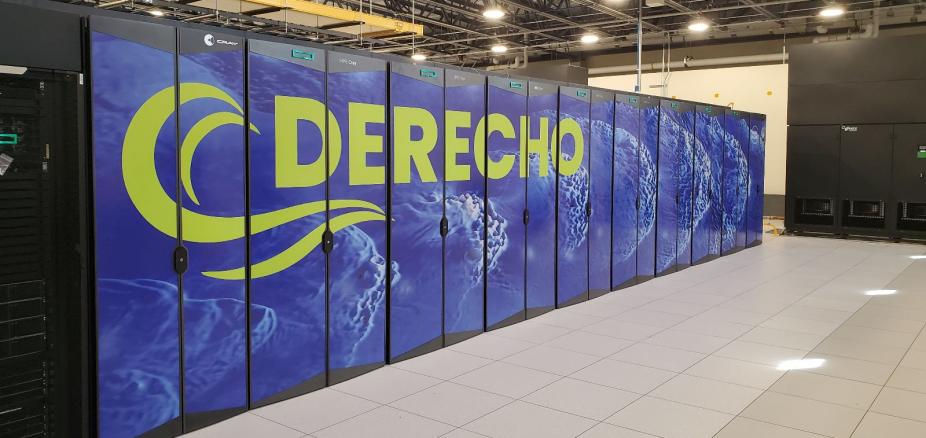NCAR's new Derecho supercomputer launches operations

Derecho, NSF NCAR’s 19.87-petaflops supercomputer, is dedicated to supporting Earth system science.
After months of testing, the National Center for Atmospheric Research (NCAR) has launched operations of its newest supercomputer at the NCAR-Wyoming Supercomputing Center in Cheyenne. The supercomputer, named “Derecho,” provides scientists across the country with a major new tool to advance understanding of the atmosphere and other Earth system processes, as noted in this news item from the University Corporation for Atmospheric Research.
Built by Hewlett Packard Enterprise, Derecho is a 19.87-petaflops system, with about 3.5 times the computing speed of the previous NCAR supercomputer, “Cheyenne.” Derecho is being used to study phenomena ranging from wildfires and hurricanes to solar storms. The findings will help better protect society from environmental disasters, lead to more reliable projections of long-term weather patterns, and improve weather and climate predictions that are needed by vulnerable communities and critical economic sectors such as agriculture and transportation.
“We are very pleased that Derecho has passed through the testing phase and is beginning operations,” said Thomas Hauser, interim director of NCAR’s Computational and Information Systems Laboratory. “This new system provides us with a major boost in supercomputing performance and is an invaluable asset as the nation’s scientists work to better understand the Earth system.”
Derecho is initially being used for a set of 15 projects by scientists at NCAR as well as at universities across the country. These projects comprise the Accelerated Scientific Discovery program, which provides a unique opportunity for large-scale computational projects to have nearly exclusive use of new NCAR high-performance computing systems for a few months. Derecho will be open to additional projects by the scientific community later this summer.